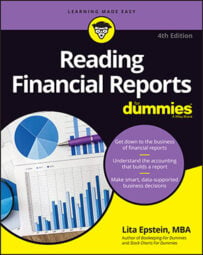Asset accounts come first in the Chart of Accounts, with the most current accounts (ones that the company will use in less than 12 months) listed before the long-term accounts (ones that the company will use in more than 12 months).
Tangible assets
Assets that you can hold in your hand are tangible assets, and they include current assets and long-term assets. Current assets are assets that the company will use up in the next 12 months. The following are examples of current-asset accounts:
Cash in checking: This account is always the first one listed. Businesses use this account most often. They deposit their cash received as revenue and their cash paid out to cover bills and debt.
Cash in savings: This account is where firms keep cash they don't need for daily operations. It usually earns interest until the company decides how it wants to use this surplus cash.
Cash on hand: This account tracks the actual cash the company keeps at its business locations. Cash on hand includes money in the cash registers, as well as petty cash. Most companies have several different cash-on-hand accounts.
For example, a store may have its own account for tracking cash in the registers, and each department may have its own petty cash account. How these accounts are structured depends on the company and the security controls it has in place to manage the cash on hand. Companies always leave plenty of room for additions in this account category.
Accounts receivable: In this account, businesses record transactions in which customers bought products on store or company credit. Only companies that use the accrual method of accounting need this account.
Inventory: This account tracks the cost of products the company has available for sale. Businesses adjust this account periodically throughout the year to reflect the changes in inventory affected by sales or other factors, such as breakage or theft. Although some firms use a computerized inventory system that adjusts the account almost instantaneously, others adjust the account only at the end of an accounting period.
Long-term assets are assets that a company will hold for more than 12 months. The following are common long-term asset accounts:
Land: This account records any purchases of land as a company asset. Companies list land separately because it doesn't depreciate in value like the building or buildings sitting on it do.
Buildings: This account lists the value of any buildings the company owns. This value is always a positive number.
Accumulated depreciation: This account tracks the depreciation of company-owned buildings. Each year, the firm deducts a portion of the building's value based on the building's costs and the number of years the building will have a productive life.
Leasehold improvements: This account tracks improvements to buildings that the company leases rather than buys. In most cases, when a company leases retail or warehouse space, it must pay the costs of improving the property for its unique business use. These improvements are also depreciated, so the company uses a companion depreciation account called Accumulated depreciation — Leasehold improvements.
Vehicles: This account tracks the cars, trucks, and other vehicles that a business owns. The initial value added to this account is the value of the vehicles when put into service. Vehicles are also depreciated, and the depreciation account is Accumulated depreciation — Vehicles.
Furniture and Fixtures: This account tracks all the desks, chairs, and other fixtures a company buys for its offices, warehouses, and retail stores. Yes, these items, too, are depreciated, and the depreciation account is named Accumulated depreciation — Furniture and fixtures.
Equipment: This account tracks any equipment a company purchases that's expected to have a useful life of more than one year. This equipment includes computers, copiers, cash registers, and any other equipment needs. The depreciation account is Accumulated depreciation — Equipment.
Intangible assets
Companies also hold intangible assets, which have value but are often difficult to measure. The following are the most common intangible assets in the Chart of Accounts:
Goodwill: A company needs this account only when it has bought another company. Frequently, a business that purchases another business pays more than the actual value of its assets minus its liabilities. The premium paid, which may account for factors such as customer loyalty, an exceptional workforce, and a great location, is listed on the books as goodwill.
Intellectual property: This category includes copyrights, patents, and written work or products for which the company has been granted exclusive rights. For example, the government grants patents to a company or individual that invents a new product or process. These assets are amortized, which is similar to depreciation, because intellectual property has a limited lifespan. The amortization account is Accumulated amortization — Intellectual property.
Having exclusive rights to a product allows a company to hold off competition, which can mean a lot of extra profits. Patented products can often command a much higher price than products that aren't patented.

